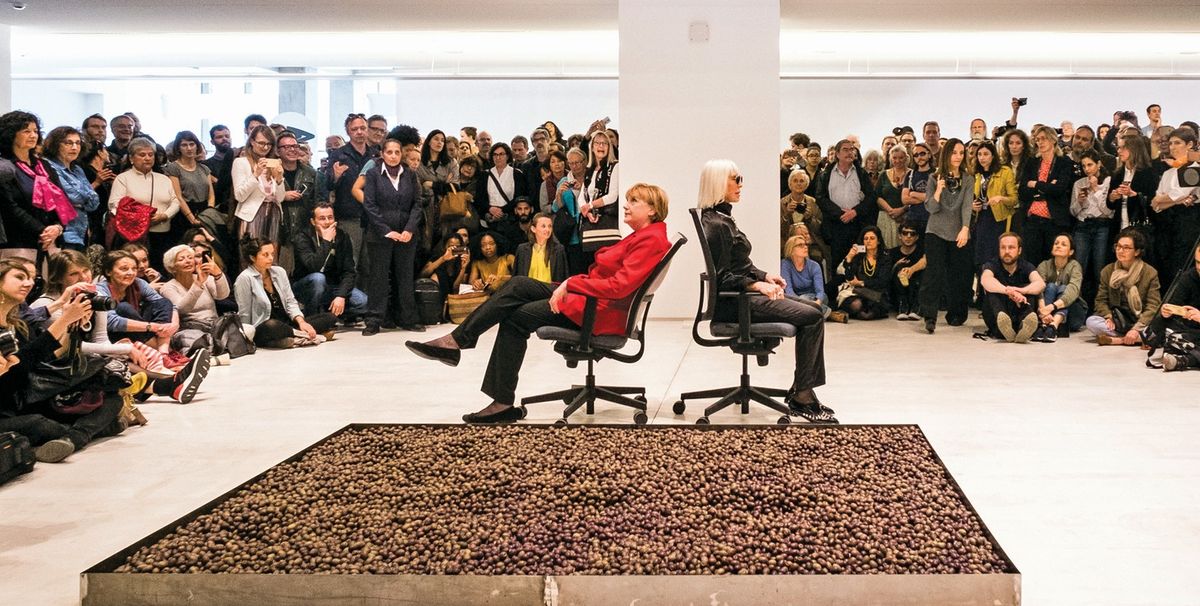As Greek politicians entered fresh bailout talks with Europe’s finance ministers, the international art world descended on Athens for the opening of Documenta 14 in early April (until 16 July). Visitors flocked to the cash-strapped public venues—including museums, art centres and art schools—that are hosting the quinquennial exhibition for the first time outside Kassel in Germany.
Helping to lift these institutions out of the economic crisis is one of Documenta’s central aims. “We are trying to give more life to places that are struggling,” Adam Szymczyk, the event’s artistic director, said in an interview last month. “We’re desperately trying to work with public institutions to show that they’re continuing with their work despite the crisis and that they’re important places to visit when coming to Athens.”
Documenta’s main venue, the National Museum of Contemporary Art, Athens (EMST), is feeling the full brunt of the crisis. Established by the Greek government in 1997, the museum has led a nomadic life since it started operating in 2000. It opened on the ground floor of the derelict former Fix brewery before staging exhibitions in the Athens Concert Hall (Megaron) from 2003. Five years later, it moved to the Athens Conservatoire, and then finally returned to the refurbished Fix building in May 2015. The museum held its first exhibition there last October—almost 20 years after it was founded.
However, most of the building stands empty. Only the temporary exhibition galleries are open to the public, while the collection of more than 1,000 works by Greek and international artists remains in storage. EMST faces overwhelming bureaucratic hurdles, says Katerina Koskina, its director since 2015. “We get very little money from the state but are also unable to raise our own funds by renting out space,” she says. “Our hands are tied as we wait for a key document to be approved by several government authorities.”
The museum also faces a severe staff shortage. It is currently run by 18 employees, but Koskina says around 90 are needed to open the museum fully. Recruitment is a slow and time- consuming process as all appointments must be approved by a government advisory board—part of Greece’s tight grip on public spending.
Around 250 works from EMST are travelling next month to the Fridericianum in Kassel for the German iteration of Documenta (10 June-17 September). The museum hopes to hang the works in the Fix building when they return. “What is important is to make the collection public,” Koskina says. “Greek artists have been on the periphery for so many years—they deserve so much better.”
Greece’s culture expenditure as a percentage of GDP is among the lowest in Europe. But Greek artists were having a hard time even before the crisis, says the Greek-born, Brussels-based curator Katerina Gregos. Faced with the huge financial burden of the country’s ancient heritage, the government had little left over for contemporary art. “The ministry of culture has never had a coherent vision about how to promote contemporary Greek culture,” Gregos says.
Not all is gloom. Private initiatives such as the Stavros Niarchos Foundation, the Deste Foundation for Contemporary Art and Neon have compensated for the cuts, bringing infrastructure and much-needed financial relief to the Greek art scene. The capital’s rock-bottom rents, a by-product of the crisis, has allowed non-profit, independent spaces to grow.
“These grassroots initiatives are the vital lifeblood of the contemporary art landscape in Athens,” says Gregos, who has teamed up with Iliana Fokianaki, an Athens-based curator and founder of the non-profit gallery State of Concept, to create a map of the city’s independent art spaces. The Athens Independents Art Index is supported by Germany’s Schwarz Foundation, where Gregos is also a curator.
Documenta’s legacy remains to be seen, but its arrival in Athens has already inspired new curatorial ideas and collaborations, says Fotini Kapiris, who founded the artist-run space ArtWall in 2012. It organised a show of hand-made works by five Greek artists to coincide with the opening of Documenta. This follows a virtual reality-based project by students from Vienna’s University of Applied Arts. “There is a freedom to show something completely different with each exhibition,” Kapiris adds.
“We’re living in a strange world where we’re becoming poorer and life is more precarious,” says Kosmas Nikolaou, an artist and co-founder of the independent space 3 137. “But we also managed to build an infrastructure on our own and that is encouraging and empowering.”


